Changing your oil is important to keeping your car running correctly. But how long should you wait before checking the oil level? Let's take a look.
You should always check your engine oil when it is cool. Let your engine cool down for 5-10 minutes before checking the oil level to allow the oil to settle in the oil pan. In addition, you should check your engine oil every couple of months to ensure that it is at the proper level.
Knowing your engine oil level is essential to ensure that your car runs properly. This article will discuss how long to wait before checking your engine oil and why it's important. In addition, we will answer other frequently asked questions about engine oil, so read on!
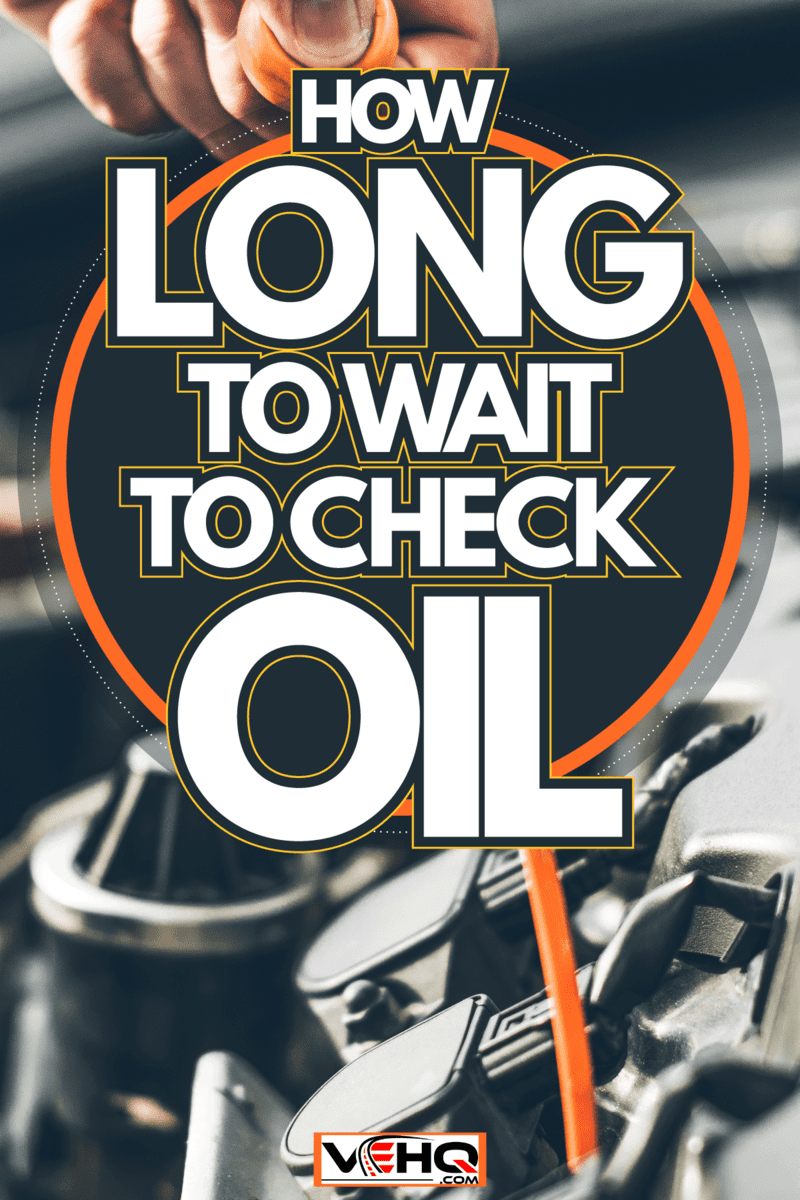
When to check your engine oil
The oil in a vehicle's engine is responsible for many things. It helps to cool and lubricate the engine and also helps to clean the engine by trapping dirt and other contaminants. That's why checking it is so important ‒ you don't want your engine to overheat or suffer from a lack of lubrication.
When your vehicle is running, the oil is cycling through the engine constantly. This means that not all of the oil is in the oil pan at one time.
So, it's important to check the oil level when the engine is off and has had a chance to cool down for 5-10 minutes. The oil will settle in the oil pan and give you the most accurate reading.
In addition, you should check your engine oil every couple of weeks or every month to ensure that it is at the proper level. This way, you can catch any leaks or other problems early on and prevent major engine damage.
If you plan on going on a long road trip, it's a good idea to check your engine oil before going. This way, you can top off the oil if it's low and avoid any problems while you're on the road.
In addition, if you own a high mileage vehicle, you should check your engine oil more frequently. This is because high mileage engines tend to use more oil and may have leaks.
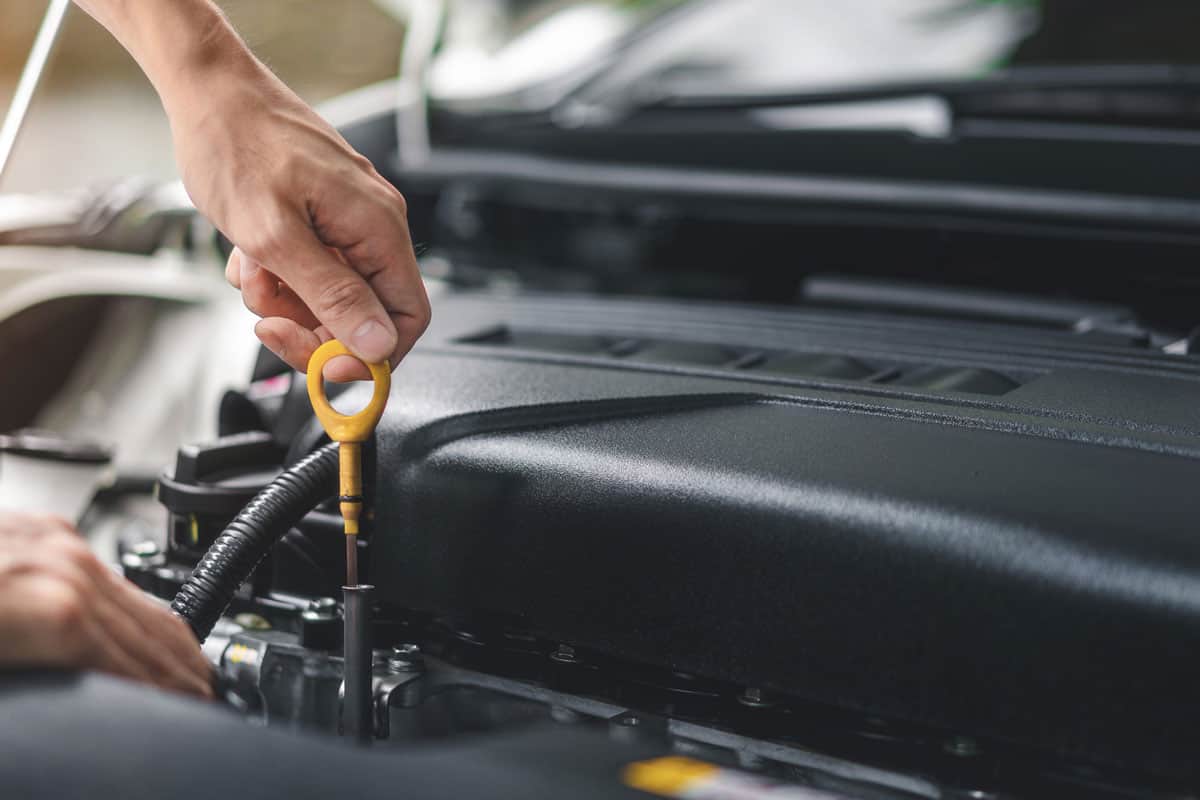
How do you check your oil?
Checking your oil is a simple process. Follow the steps below:
- First, let your engine cool down and locate the dipstick. It's usually marked with an "oil" or "engine" symbol.
- Once you've located the dipstick, pull it out and wipe it off with a clean cloth. Then, reinsert the dipstick all the way back into the tube.
- After you've done this, pull the dipstick back out and check the oil level. If the oil is at or below the "low" mark on the dipstick, you need to add more oil.
- Locate the oil fill cap under your vehicle's hood to add oil. It's usually marked with an "oil" or "engine" symbol. Remove the oil fill cap and add oil a little at a time. You don't want to overfill the engine!
- Then, replace the oil fill cap and make sure it's tight. You don't want the oil to leak out.
- After adding oil, start the engine and let it run for a few minutes. Then, turn it off and recheck the oil level. The oil should be at the proper level.
- If not, add more oil until it reaches the proper level.
After adding oil, this is an excellent time to check for any leaks. Look around the engine for any oil leaks. If you see any, make sure to get them fixed as soon as possible.
And that's it! You've successfully checked your engine oil. This is a simple but important task that every driver should do regularly.
Should you use synthetic or conventional oil?
Not all oils are created equal. In addition, there are different types of oil for different vehicles. Therefore, you should always use the type of oil specified by your vehicle's manufacturer.
There are two main types of oil: synthetic and conventional. Synthetic oil is a manufactured oil designed to last longer and perform better than conventional oil.
Conventional oil is the traditional oil that has been used in vehicles for many years. However, it's made from petroleum products and can break down over time.
You can choose either type of oil, but synthetic oil is generally a better choice because it protects your engine and lasts longer.
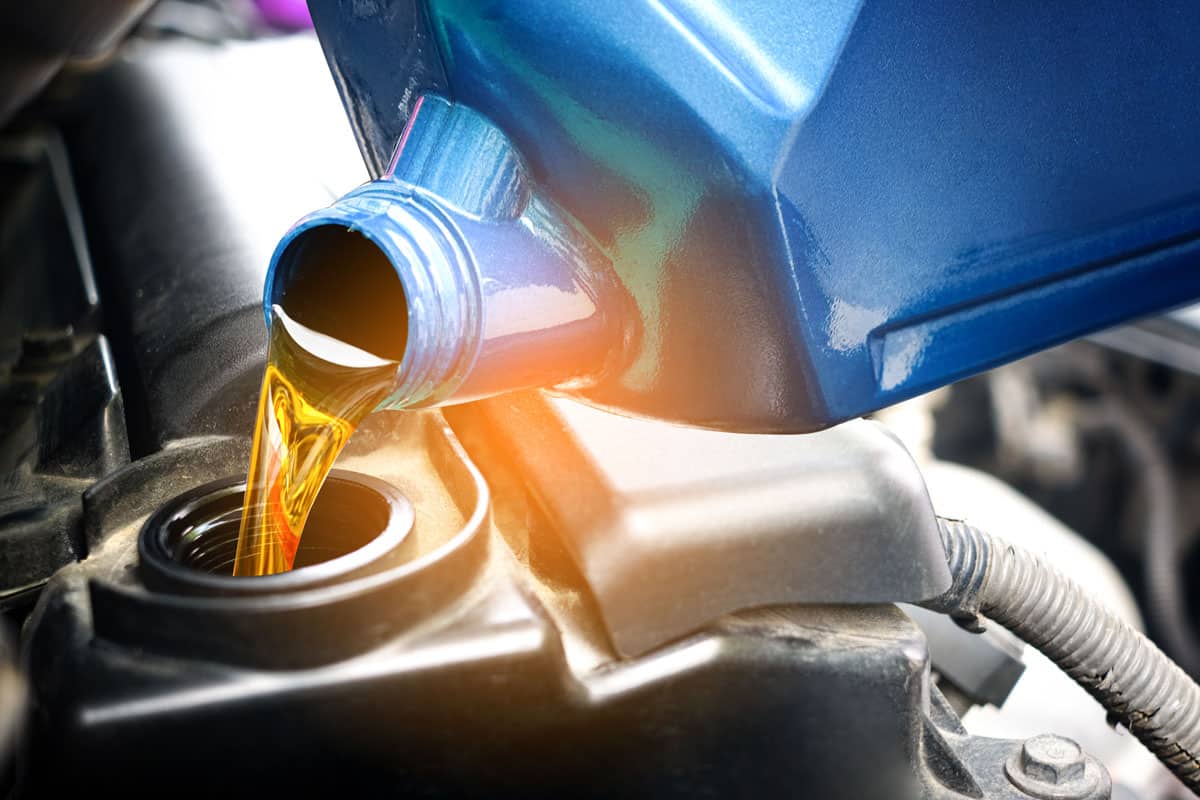
How often to change the oil?
How often you should change your vehicle's oil will depend on a few factors. These include the type of oil you're using, the age and make of your vehicle, and your driving habits.
If you're using synthetic oil, you can usually go longer between oil changes. This is because synthetic oil doesn't break down as quickly as conventional oil.
For synthetic oils, manufacturers will usually say to change it every 7,500 miles or every six months, whichever comes first.
The recommendation is usually to change it every 3,000-5,000 miles or three months for conventional oil. However, this can vary depending on your vehicle and your driving habits. For example, if you do a lot of stop-and-go driving or drive in dusty or dirty conditions, you may need to change your oil more often.
To be safe, it's a good idea to check your owner's manual for the specific recommendation for your vehicle.
What oil weight should I use?
Oil weight is the measure of how thick or thin the oil is. It's measured in terms of viscosity, which is how well the oil flows.
The thicker the oil, the higher the viscosity. The thinner the oil, the lower the viscosity.
Different oils have different viscosities, and the correct viscosity for your vehicle will depend on a few factors. These include the climate, the type of engine, and the manufacturer's recommendations.
For example, if you live in a cold climate, you'll need an oil with a higher viscosity. This is because thicker oils don't flow as well in cold temperatures, and they can cause engine damage.
In general, most vehicles will use an oil with a viscosity of 5W-30 or 5W-20. However, it's always best to check your owner's manual for the specific recommendation for your vehicle.
If you don't have an owner's manual, check with a mechanic you trust.
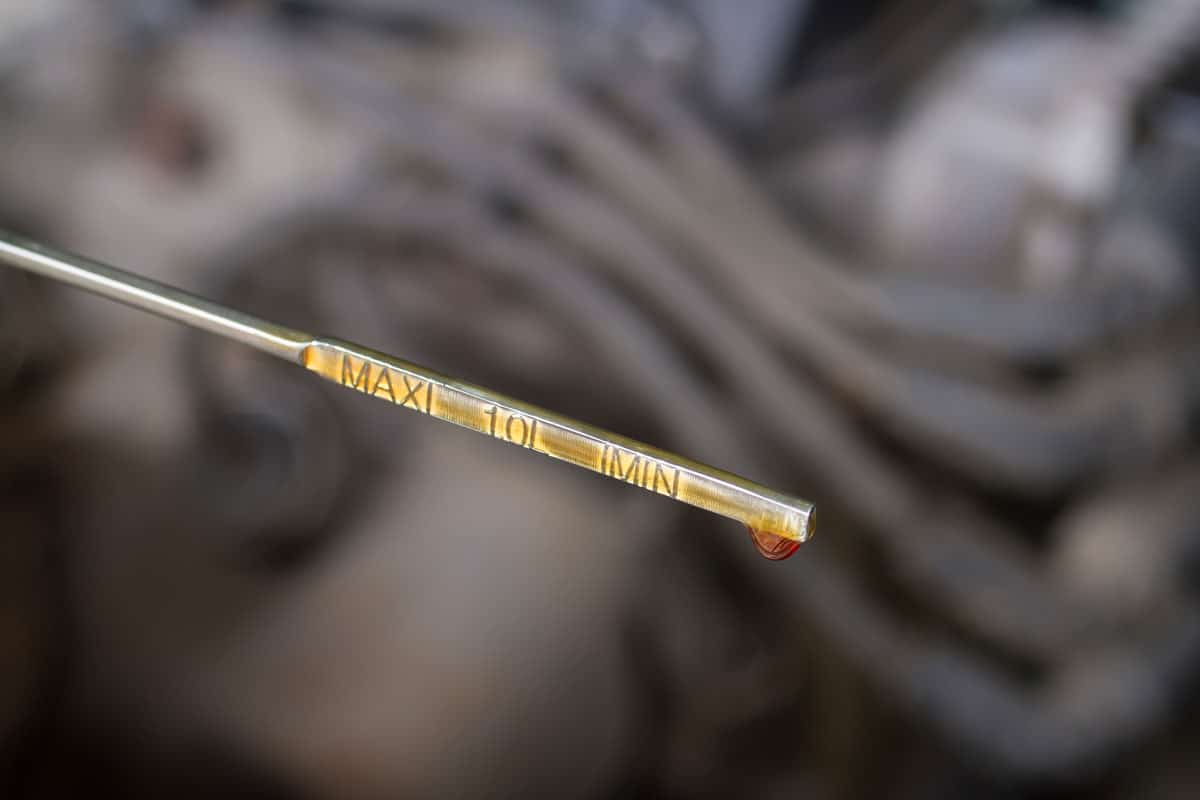
Is it okay to slightly overfill engine oil?
If you accidentally add too much oil to your engine, don't worry. It's not a big deal. However, it is important to make sure that you don't overfill it too much.
If you add too much oil [half a quart or more], it can cause problems. It can make your engine run less efficiently, and it can cause damage to the engine over time.
When you check it, you can tell if you added too much oil if foam is on the dipstick. If this happens, you should drain some of the oil out until the level is back to normal.
Can I add oil instead of getting it changed?
Adding oil is good if the engine is low a quart or so. However, it's not a good idea to use this to extend the interval between oil changes.
However, mixing old oil with new oil can cause problems. The old oil will have built-up contaminants that can clog up your engine.
It's always best to get an oil change when it's time. This way, you'll know that the oil in your engine is fresh and clean.
What are the consequences of not changing your oil?
If you don't change your oil, it will eventually break down and turn into sludge. This can clog up your engine and cause damage.
It can also cause your engine to run less efficiently, leading to premature wear and tear.

Ultimately, not changing your oil can shorten the life of your engine. Even if you don't drive your vehicle often, it's still a good idea to change the oil every six months. This is because oil degrades over time, even if it's not being used.
Final Thoughts
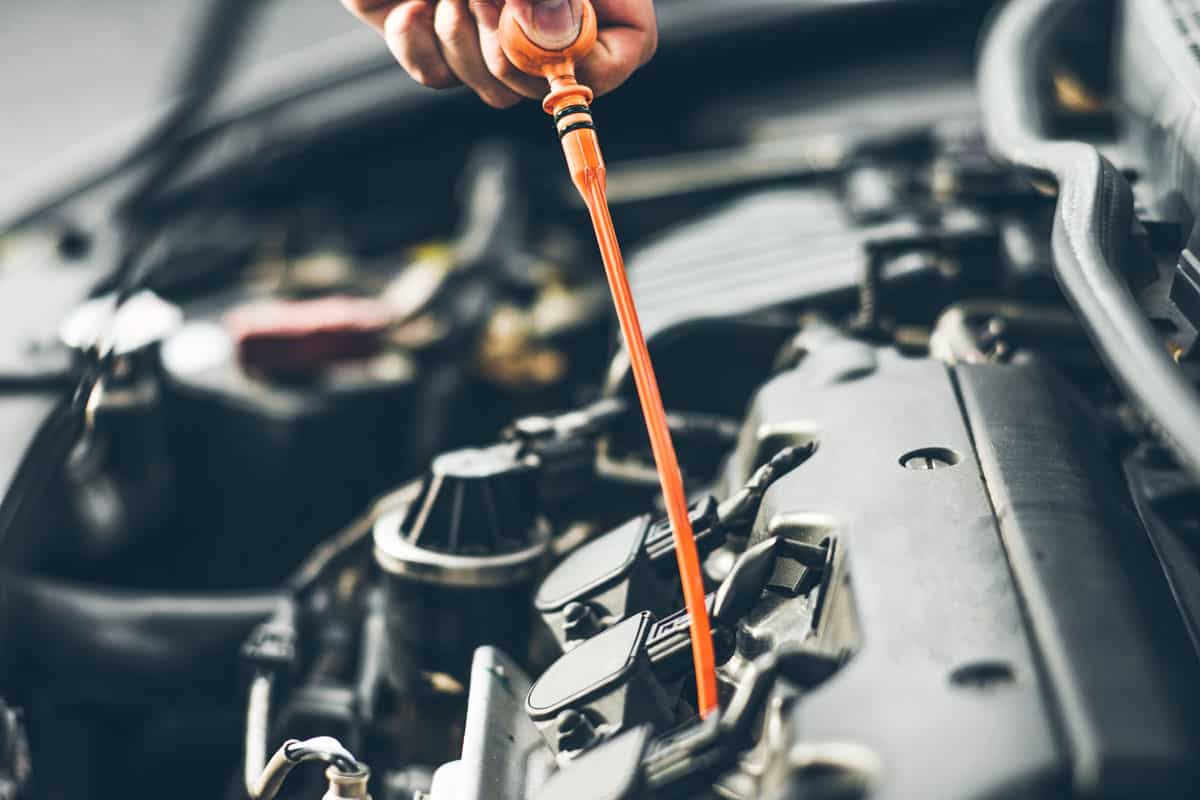
Whether you have just changed your oil or going on a long road trip, it's always best to check your oil level. This way, you can ensure that your engine gets the lubrication it needs.
If you're unsure about anything, it's always best to consult with a trusted mechanic. They will be able to help you figure out what's best for your vehicle.
Made it to the end? Here are other articles that you might find helpful:
Can You Drive With The Oil Light On [And How Far]?
